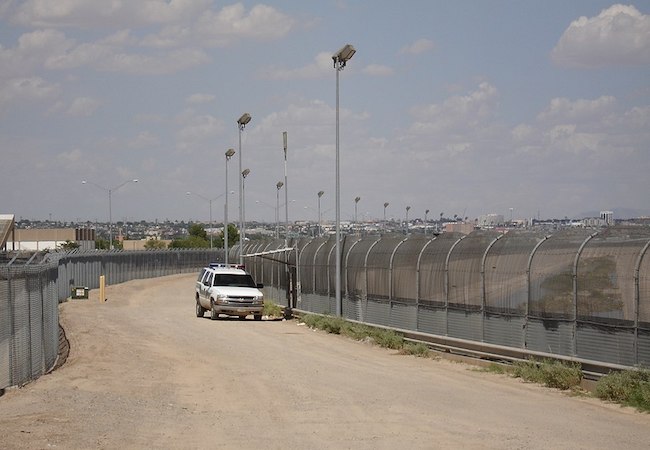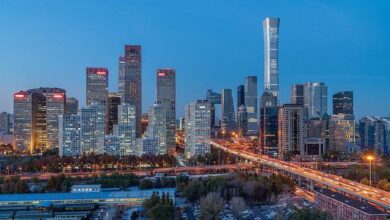
By Raphael Benaroya
Since the Berlin Wall fell, more walls have gone up around the world than come down—Harvard International Review reports four times as many national border walls today than there were in 1989. The U.S.-Mexico border is an especially divisive topic now, with seemingly entrenched political viewpoints on, you might say, both sides of the fence.
But what exactly is a “wall”? And how does it actually translate into border security?
Israel serves as a good case study for walls, since it has invested heavily in securing its borders. But Israel’s “walls” vary widely, depending on terrain, geology, climate, and specific purpose. I have seen these barriers up close and been briefed by commanders in each sector on the many elements that work together to achieve local objectives.
It is instructive to take stock of these elements and objectives. And consider what else makes an effective barrier, beyond a physical structure. Different challenges—military threats, terrorism, drug smuggling, human trafficking, illegal immigration—all call for different solutions. No monolithic “wall” alone provides a panacea. Solutions incorporate effective technology, teamwork, sound laws and policies, and cross-border cooperation.
On the West Bank, the main goal of Israel’s 290-mile-long barrier is to stop terrorism and slow the movement of illegal labor. Most of this barrier is multi-layered: razor-wire, electronic intrusion-detection fences, anti-vehicle ditches, measures to detect footprints, patrol roads, observation towers, aerial surveillance, and broad “exclusion areas” outside the barrier. Certain sections, in urban areas with limited space, have true walls—concrete partitions more than 25 feet high, supplemented by cameras, listening devices, and other sensors.
Critically, however, these elements do not stand alone. Control rooms monitor activity 24/7, and rapid-response teams react quickly to incursions.
The West Bank barrier has been effective in combatting terrorism. Immediately following its construction, attacks and resulting casualties fell some 80%, according to Israel’s Foreign Ministry. The barrier has deterred illegal labor entry as well, though at controlled points it also allows extensive legal movement of people and goods.
Israel’s northern borders with Lebanon and Syria are active war zones, threatened by Hezbollah, ISIS, Syrian rebels, and Iranian militias operating in Syria. They feature a combination of military fortifications and anti-terrorist structures: parts of the line are composed of defensive berms, observation posts, and military units with lethal-force authorization; other sections consist of steel fencing or concrete walls topped with steel mesh. Advanced intrusion-detection technologies enhance the physical structures—including anti-tunnel systems.
The northern barriers have been an effective deterrent. Hezbollah, the Shiite terror group, has attempted to infiltrate many times, but succeeded only once.
Israel’s barrier on the Gaza Strip also focuses on tunnel-sensing technology, to combat Hamas terrorist infiltration and weapons-smuggling. Above ground, steel fencing, augmented by camera-equipped balloons and other sensors, helps control Hamas-instigated demonstrations. There are no concrete walls on the surface; however, construction of a 40-mile-long reinforced concrete wall below ground is underway.
The Gaza barrier also extends more than a mile into the Mediterranean Sea, to counter the threat of Hamas naval commandos. This sea barrier consists of an underwater concrete-and-steel structure, a layer of armored stone, and an above-surface earthen mound—all surrounded by a 20-foot-high smart fence. The system employs subsurface seismic sensors as well, to detect tunneling activity.
Despite all these high-tech elements, it is again important to emphasize the vital role of command-and-control centers, where around-the-clock human observers direct rapid-response teams as needed.
Once again, the results have been impressive. Israel has disrupted dozens of tunneling attempts and, according to the Jewish Virtual Library, “not a single suicide bomber has managed to cross Israel’s border with Gaza.”
In contrast, at Israel’s southern border with Egypt, the main concern is not terrorism, but rather illegal immigration, human trafficking, and drug smuggling. To stem the flow of illegal immigrants and contraband across the Sinai Peninsula, Israel erected a 150-mile-long smart fence with observation towers, cameras, radar, motion detectors, and barbed-wire. And, of course, 24/7 monitoring with rapid-response teams.
The impact of the Sinai barrier has been significant. According to Israel’s Ministry of the Interior, 17,000 African immigrants entered Israel illegally in 2011, before the fence was built; but after it was completed in 2013, only 43 crossed. And that number reportedly fell to 11 in 2016, and zero in 2017.
Just as significant as the fence, however, have been government policies for managing immigration, in tandem with physical deterrence.
Israel promotes legal guest worker programs. As the U.S. Library of Congress has documented, hundreds of thousands of migrant workers from Asia and Europe, as well as Palestinians, have been employed through these programs in agriculture, construction, eldercare, and other industries.
At the same time, Israel has enacted several laws to disincentivize illegal migrants. One law bars such individuals from sending money out of the country. Another requires employers to withhold 20% of guest workers’ pay until they leave the country, to ensure they do not overstay their work visas. And employers are also punished if they employ illegal laborers.
It is also important to note that the effectiveness of the Sinai barrier has been due in part to Egypt’s cooperation with Israel. The same is true at Israel’s border with Jordan, which has only “minimal” fencing. This underscores the value of partnerships between neighboring nations in achieving common border goals.
So what is a “wall” and how does it translate into border security?
Clearly a wall can be many things, depending on its purpose. But whatever the physical makeup of the barrier, it cannot stand alone. As pointed out by Professor Efraim Inbar, President of the Jerusalem Institute for Strategy and Security, a physical structure is not fool-proof—“what’s important are actions beyond the fence, combined with intelligence gathering.”
To be effective, a border barrier requires a range of purpose-specific structures and supporting technology to address different goals, terrain, and threats. It also depends on active human monitoring and management, coordinated with well-thought-out government policy, and supported by cooperative neighbors.
To achieve this, a real dialog across the political spectrum is needed to develop an intelligent mix of solutions, in addition to a “wall.”
Raphael Benaroya is the Senior Partner of Biltmore Capital and serves as Vice Chair of Business Executives for National Security (BENS), a Washington, D.C.-based, non-partisan NGO. In that role he has received several awards for his work on national security, including the Dwight D. Eisenhower Award.




